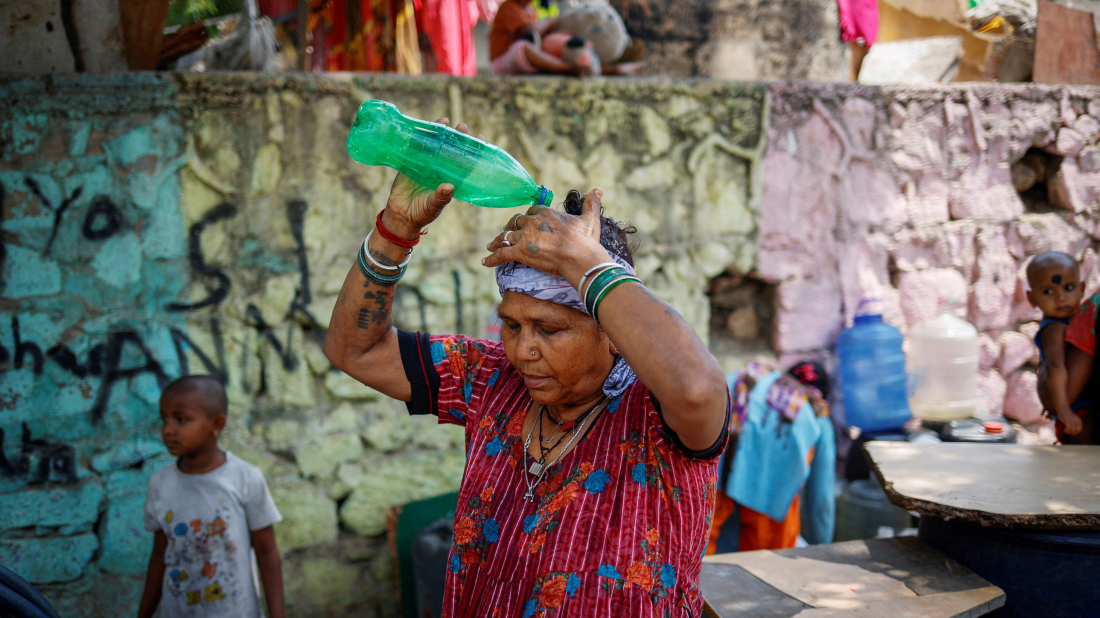OCHA says Afghanistan will remain among world’s largest humanitarian crises in 2026
Afghanistan is expected to remain one of the world’s largest humanitarian crises in 2026, with nearly half of the population projected to require hu...

A severe heatwave in India and Pakistan is testing the limits of human survival, with temperatures expected to rise to dangerous levels in the coming days. The early onset of summer heat has already strained energy supplies, impacted vital crops, and placed millions of livelihoods at risk.
Both nations, which typically experience heatwaves in May and June, are facing extreme temperatures much earlier this year, with the heat expected to last longer than usual.
In Pakistan, temperatures are forecast to soar up to 8 degrees Celsius above normal between April 14-18. Parts of Balochistan, in the southwest, could experience maximum temperatures nearing 49°C (120°F), similar to the sweltering conditions of Death Valley, one of the hottest places in the world.
The heatwave has caught many by surprise, particularly in areas like Balochistan’s Dera Murad Jamali city, where persistent power outages lasting up to 16 hours a day have exacerbated the effects of the extreme heat, making daily life unbearable. "This has intensified the impact of the heat, making it harder for people to cope," said local resident Ayoub Khosa.
In neighboring India, the heat has also arrived earlier than expected. The capital, New Delhi, has already experienced temperatures over 40°C (104°F) several times this month, and the meteorological department has warned of an above-normal number of heatwave days. Other regions, including Rajasthan, are also grappling with scorching temperatures, with maximum temperatures reaching 44°C (111°F).
Farmers in Rajasthan are particularly vulnerable, with many reporting health issues due to the extreme conditions. "We cannot even stand to work in it," said farmer Balu Lal. "When I am out, I feel that people would burn due to the heat outside." The early onset of heat is also disrupting crop cycles, with young plants struggling to survive in the dry heat. The rising temperatures are further complicating food production, as crops that are not yet ready to harvest are failing due to a lack of water and excessive heat.
Experts warn that the rising temperatures are pushing the limits of human survivability. Heatwaves have already claimed tens of thousands of lives in the region in recent decades, and climate experts predict that by 2050, India could be among the first places where temperatures exceed survivability thresholds. Pregnant women, in particular, are at risk, with an increase in preterm births and pregnancy-related complications, according to Neha Mankani, an advisor at the International Confederation of Midwives.
The cascading effects of the heatwave are devastating. Food shortages, drought, and flash floods are expected to become more frequent, as melting ice caps disrupt water availability. Mehrunissa Malik, a climate change expert, highlighted the impact on farmers, explaining that erratic weather patterns are making it increasingly difficult to predict crop yields, which are now being hit by both the heat and pest attacks.
With power shortages already plaguing both countries, demand for electricity is expected to soar, exacerbating the ongoing energy crisis. In some areas, schools have been closed, and transportation systems have been disrupted, further highlighting the far-reaching consequences of the heat.
As heatwaves continue to become more frequent and intense, millions of people in India and Pakistan face a future of increased vulnerability, with food production, health, and livelihoods increasingly at risk.
Protests in Iran over soaring prices and a plunging rial have spread to universities in Tehran, as students join shopkeepers and bazaar merchants in demanding government action. With inflation above 42% and the rial at record lows, unrest continues to grow across the country.
As Russia’s war in Ukraine enters its fourth year, rising casualties, economic struggles, and mounting unrest expose cracks in society. Despite Kremlin propaganda, frustration is growing as more Russians question the government’s narrative, according to The Washington Post.
The Russian radio station known as 'Doomsday Radio' (or UVB-76) unexpectedly began playing ‘Swan Lake’, music from a ballet composition. The last time this was done was during the deaths of Soviet-era leaders and the 1991 coup.
The head of Yemen’s Presidential Council, Rashad al-Alimi, has ordered all forces linked to the United Arab Emirates to leave Yemen within 24 hours.
Syria’s permanent representative to the United Nations, Ibrahim Olabi, said Israel has occupied the Syrian Golan Heights for almost sixty years, and that the UN General Assembly this month once again reaffirmed Syria’s sovereignty over the region.
Afghanistan is expected to remain one of the world’s largest humanitarian crises in 2026, with nearly half of the population projected to require humanitarian assistance, according to a new report published by the United Nations Office for the Coordination of Humanitarian Affairs (OCHA).
The Russian radio station known as 'Doomsday Radio' (or UVB-76) unexpectedly began playing ‘Swan Lake’, music from a ballet composition. The last time this was done was during the deaths of Soviet-era leaders and the 1991 coup.
Türkiye will never tolerate coercion, piracy, or banditry in its maritime “blue homeland,” President Recep Tayyip Erdoğan said on Wednesday.
As Russia’s war in Ukraine enters its fourth year, rising casualties, economic struggles, and mounting unrest expose cracks in society. Despite Kremlin propaganda, frustration is growing as more Russians question the government’s narrative, according to The Washington Post.
Start your day informed with AnewZ Morning Brief: here are the top news stories for the 31st of December, covering the latest developments you need to know.
You can download the AnewZ application from Play Store and the App Store.

What is your opinion on this topic?
Leave the first comment